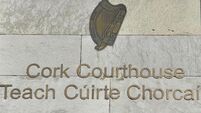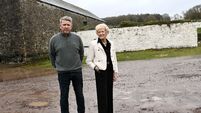Why it feels like money has become worthless

For a country that’s going so well, effectively collecting more than double the money compared to boom times, are we as a country better off now than we were then?
Is it just me, or does it feel like 2007 all over again?
The economy is going well. Ministers Paschal Donoghue and Jack Chambers will preside over what is likely to be the biggest budget in the history of the State. Exchequer receipts, the amount of money collected by the State in taxation, stood at a massive €104bn for 2024. For 2025, the figures are running stronger, at least for now. Tax receipts of €64.1bn were collected to the end of August, up by €4.4bn (7.3%) on the same period of 2024.
When once-off tax revenues are excluded, ‘underlying’ tax revenues stood at €62.4bn, a €2.6bn (4.4%) increase on last year. To put these receipts in context, back in the Celtic Tiger era, tax receipts paled in comparison. Revenue for 2006 stood at €45.539bn and €47.5bn for 2007. By 2008, the tax receipts had fallen off a cliff by over €6bn compared to the prior year.
As of May 20025, Dublin residential property prices were 5.3% higher than their February 2007 peak, while residential property prices in the rest of Ireland were 20.5% higher than their May 2007 peak. Yes, the average industrial wage has increased significantly over the past two decades, but it feels like the spending power of what one now earns has eroded at pace over the past few years.
For the layperson, unarmed with statistics, it feels like money has become worthless. Back in 2006, the average price of a pint of one leading stout brand was €3.72. Good luck to you if you can find a pint for less than €6 now. The price of a pint index is basic but totally relevant and a ground-up metric that everyone understands and can relate to. The price gouging has also returned in respect of some trades, not to mind the actual inability to get someone to take on a job. As an aside, I don’t blame tradespersons but rather blame the system, which threw tradespersons under the bus during the last recession and favoured academia over hard skills for decades.
Whilst the unemployment rates look well and the tax receipts show a phenomenal rebound from the dark days of Ireland's recession, the truth is that the outgoings of the country have grown to match our incomings, bar the relatively small percentage we devote to rainy day funds. The public sector, social welfare supports, and costs of running the country have bloated to match our national income. This leaves us in a precarious position in the event that there are shocks to our national income.
On the farming side, the dairy and beef are likely to have a record year in 2025, but equally, the value of money seems to have evaporated. Replace the price of a pint metric with the price of a metre of concrete index, and farmers will attest to a near doubling of the price of a metre of concrete over the past 20 years. The price of a new tractor has also more or less doubled in that period, but I’m sure those in the industry will point to all the benefits and tech now incorporated.
A 140-horsepower six-cylinder main brand tractor could be bought for sub €70,000 back then. Such is the level of inflation that some low-hour tractors of that vintage are making nearly as much now second-hand as they would have cost then, and you'd better be willing to pay double the 2006 price if you want to be the one to unwrap the packaging.
The price of an average acre of land in 2006 stood at €23,616, but this figure is thought of generally as having been skewed by sales of development land and, indeed, the recycling of development land sales proceeds back into replacing land by sellers in this era. By 2010, the average price of agricultural land in Ireland stood at €9,220. Not dissimilar to the price of a pint index or the price of a metre of concrete index, it’s fair to say that quality land is, in many instances, making more than double that price presently.
Maybe it’s a case that I’m looking back with rose-tinted glasses at a time when one could get value for money, and maybe my assessment of “value for money” is made decades later on a retrospective basis, and maybe it’s just a case that everything else has moved along in the intervening time. The astronomical figures that are spent on various projects, such as the National Children’s Hospital, right down to local projects such as walkways and worse still, assessments before any sod is turned, scream lack of value for money.
Maybe the value or lack thereof in these projects will only be known in decades to come. I'd better keep those rose-tinted glasses for future use.













